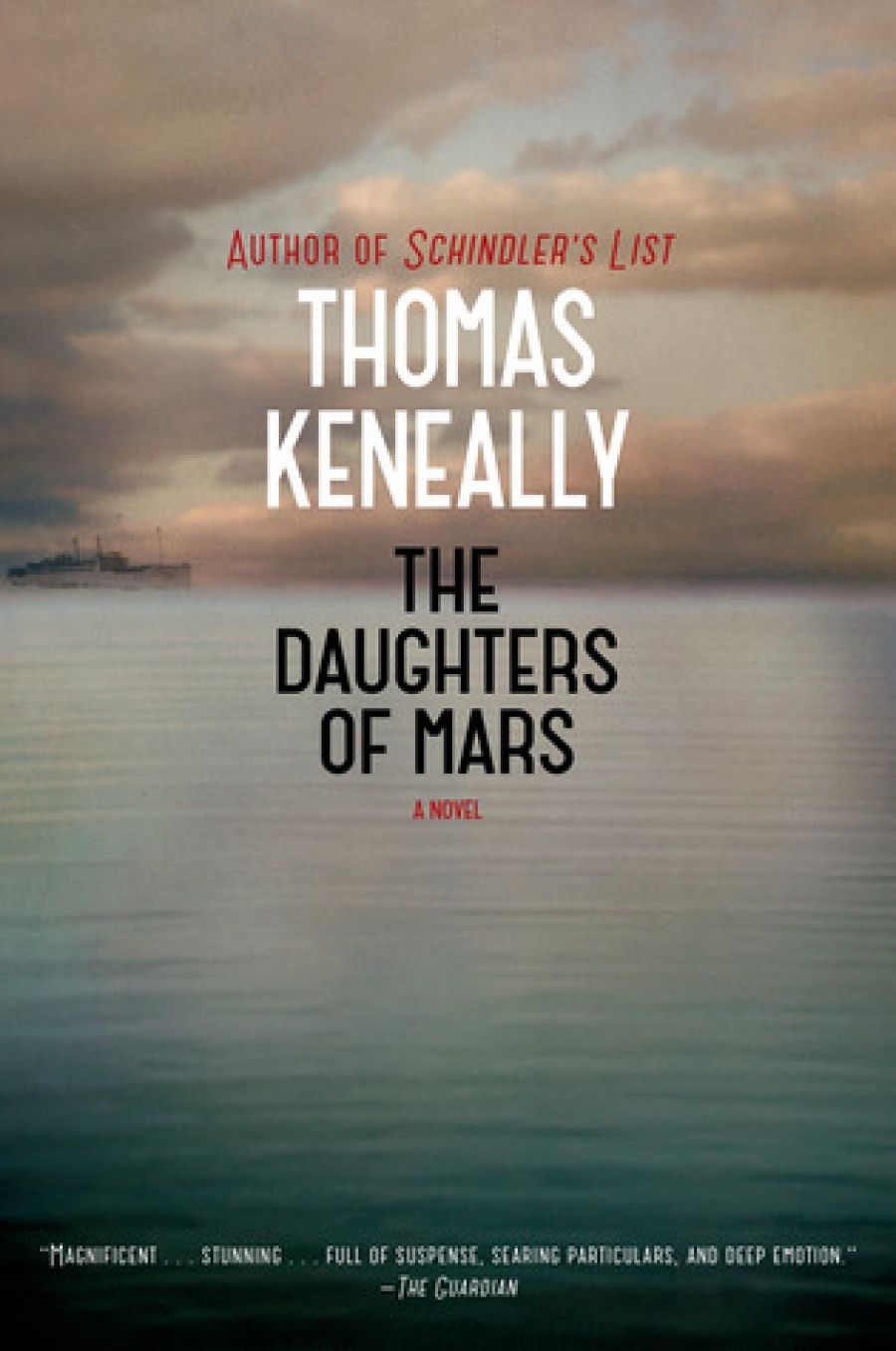
- Free Article: No
- Contents Category: Fiction
- Custom Article Title: Phil Brown reviews 'The Daughters of Mars' by Thomas Keneally
- Review Article: Yes
- Online Only: No
- Custom Highlight Text:
Balancing the big picture with the intimate details that engage us when reading a novel is not easy. This latest book from veteran Australian author Tom Keneally is epic in scope, but takes us into the intimate worlds of particular people. This is the way to tell a story about an event as mammoth as World War I. Keneally, the author of Schindler’s Ark (1982) and many other fine works of fiction and non-fiction, knows this well and has done it many times before. This time around, though, the story is overwhelmed by the attention to detail on which he obviously prides himself.
- Book 1 Title: The Daughters of Mars
- Book 1 Biblio: Vintage, $32.95 pb, 592 pp, 9781864712254
To tackle what is, for some, a sacred subject – Gallipoli and the Great War – Keneally has chosen a path less travelled by focusing on characters that are peripheral but no less heroic than the soldiers who sacrificed all for ‘king and country’. The year is 1915, and two sisters from Kempsey in New South Wales answer the call to join the war effort as nurses. They are escaping small-town prejudices and the drudgery of life on a dairy farm in the Macleay Valley; they are also fleeing their own demons following their mother’s death.
Somewhat guiltily they leave their father behind. Eventually he falls victim – and I use the word advisedly – to the affections of a neighbourly widow, which adds some late comic relief to the novel. There is not much else to amuse in this epic saga about the horrors of war. The Durance sisters (Sally and Naomi) head to Egypt, where they are put to work on the Red Cross hospital ship Archimedes, which is patrolling the Dardanelles. They become daughters of Mars, the Roman god of war. In treating the broken and bloodied men who end up on their ship, they experience the charnel house that was Gallipoli.
Keneally, who was inspired by the journals of nursing sisters who served in World War I, has obviously researched the period in great detail; he displays an intimate working knowledge of hospital ships and medical procedures. The physical realities of life on such a ship were gruesome, and Keneally is graphic in his descriptions. The procedural aspects of work on Archimedes are evoked with such veracity as to be stomach-turning at times. There is much here about gaping and festering wounds. Keneally describes surgery in ways that might interest a medical student, but not necessarily the general reader.
He lifted and adjusted the young body’s posture, dragging away the foul jacket and let it drop to the floor while Honora and Sally soaked the areas near the wound with hydrogen peroxide to dilute the sticky adhesions of dressing to the wound. With the man eased sideways then on his back and sideways again by their helpmeet-orderly, by cutting the bandages they found both wounds – sockets of raw meat front and back with the bullet having made its exit five ribs up – the seventh thoracic vertebra as she must write on his chart – and about two inches from the spine.
There is some relief from the awfulness of war in periods when the nurses, sometimes accompanied by their soldier boyfriends, go on excursions to exotic places such as Alexandria, Cairo, and the Greek island of Lemnos. Keneally infuses the narrative with Greek mythology; here and there the narrative becomes a kind of travelogue. The same applies to subsequent passages set in France and England, where the horrors of war are countered by the romance of Paris and the gentility of England.
Keneally covers much ground and does a credible job evoking the realities of life for nurses and doctors, and also the wounded and broken men of Gallipoli and other theatres of war. His attention to detail is exemplary and he is good at describing the social realities of Australia at the time. This was a conservative world where religious divisions in particular separated people, particularly in the small, claustrophobic rural community from which the nurses emerge.
Dealing with Gallipoli and the Great War often inspires a certain awkward reverence, but the sometimes irreverent Keneally is at pains not to gild the lily. This may be why he introduces an incident of sexual assault on a nurse by a serving digger. Anyone who has read Peter Stanley’s book Bad Characters: Sex, Crime, Mutiny, Murder and the Australian Imperial Force (2010) will know that Australians serving abroad in World War I were not all angels. Nonetheless, this episode feels clunky, though not as clumsy as Keneally’s sex scenes, which may qualify for a Bad Sex in Fiction Award.
He lay like an untutored log – or nearly so. She realised she might have to jump on him, knowing those technical diagrams from nursing textbooks. She dragged him by the shoulders. His hands with the terror of combat in them were around her. She could feel the calluses of his palms abrading her back. She could feel him at her thigh. At once an even more disabling flame and torture entered her body. She knew to part her legs.
Keneally’s editor would have been wise to remove this passage, for the slightly mawkish tone infects other parts of the book, at times lending an air of historical soap opera.


Comments powered by CComment